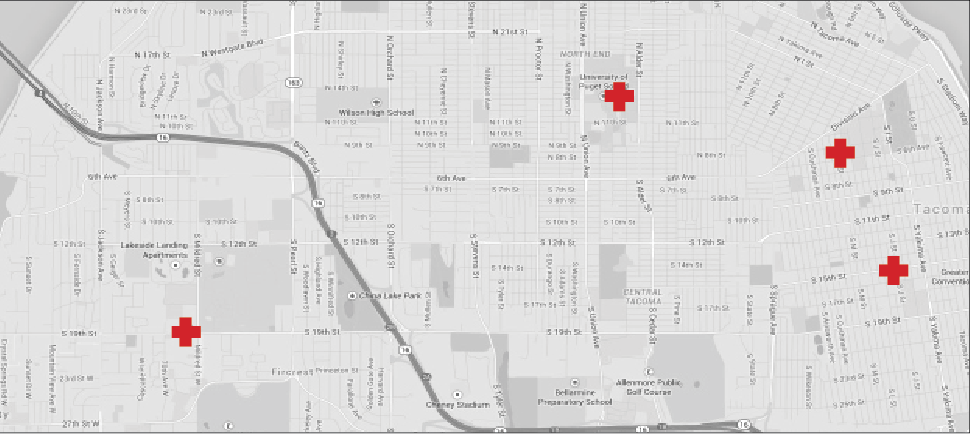
This past Monday, Dec. 1, most of the University of Puget Sound’s student body returned to their classes as they would have normally. There were classes, burnt coffee, missed meetings and general chaos as the student population scrambled to begin the final stretch of the fall 2014 semester. Yet a change, perhaps found on the sides of backpacks or the collars of jackets, may have not gone unnoticed—the presence of red ribbons meant to signify World AIDS Day.
First started in 1988, World AIDS Day is a commemoration of those lost to AIDS, a celebration of those still fighting and a campaign meant to bring awareness of the disease to the general population.
To understand AIDS, we must understand its causative agent, HIV:
H—Human: This infection can only infect humans.
I—Immunodeficiency: The disease survives by invading the human immune system and subsequently destroying it, causing it to become progressively deficient.
V—Virus: The disease uses the cells of the immune system as a host to replicate itself.
HIV is a disease that can only infect humans, attacks the human immune system and uses the system as a host for its own replication before destroying it. Whereas most viruses can be eradicated from the body over time, HIV invades and destroys T-cells—white blood cells that destroy invasive organisms—so as to replicate. As the virus grows stronger, the immune system it has invaded weakens until it is inactive. This may take any number of years, but will inevitably lead the final stage of HIV:
A—Acquired: AIDS is not a genetic trait, but rather something that one develops over time under specific circumstances.
I—Immuno: As the final stage of HIV, being diagnosed with AIDS indicates extreme issues of the immune system.
D—Deficiency: The diagnosis of AIDS indicates life-threatening weakness of the immune system.
S—Syndrome: Being a stage of infection and health issues rather than a specific virus itself, AIDS is a syndrome.
AIDS is not a single disease but rather a collection of symptoms resulting in an immune system damaged enough to allow for opportunistic infections. These include pneumonia, chronic ulcers and tuberculosis, amongst other diseases. These, alongside cancers or extremely low numbers of CD4 cells, are the indicators of AIDS. If left untreated, HIV takes approximately 10 years to develop into AIDS, but with antiretroviral therapy (drugs that suppress HIV), AIDS can be postponed indefinitely.
As a syndrome, AIDS cannot be passed or exchanged, but HIV can be passed through the exchange of bodily fluids. Such exchange includes sexual contact, blood transfusion and needle sharing; it can also be transferred from pregnant mothers to their unborn children.
Merely being in the presence of an individual with HIV cannot lead to infection.
Those at risk of contracting HIV include injection-drug users who may share unclean needles, infants born to infected mothers, recipients of questionable or illegal blood transfusions or organ donations and sexual partners of people who engage in high-risk activity (including drug users and those with multiple sexual partners).
According to the World Health Organization, as of 2013, approximately 35 million people are living with HIV worldwide, with 2.1 million having been newly infected that year. 39 million people have already died from it, and HIV is currently the world’s leading infectious killer. Most victims live in middle- or low-income countries, but due in part to the World Health Organization’s efforts, approximately 12 million of such people had access to antiretroviral therapy, and approximately 70 percent of pregnant women with HIV received antiretroviral therapy. Such therapy almost completely ensures the protection of unborn infants.
The effects of HIV and AIDS, however, extend far beyond the issues of personal health and longevity. While no one knows where and when HIV began, the general consensus amongst the scientific community is that it began in Africa in the mid-nineteenth century. After spreading rapidly across the globe, awareness of the virus in America began in 1981 when rising numbers of gay men across the country began to report increased and prolonged infections. By the end of 1981, the virus was dismissed as a “gay disease,” and even after 1982 reports of children and drug users indicated a wider population was being infected, the stigma remained. Even today, men who have sex with men are usually forbidden from donating blood, and the queer community, lower-income people and people considered to be of African descent are considered probable carriers and prime candidates of infection.
This Monday may have passed by the student body without notice, but we should not let the red ribbon pass. More people are infected every day, and although scientists are racing toward a cure, none yet exists. Let Dec. 1 stand for all those that have been lost, are living with, or are fighting against Acquired Immunodeficiency Syndrome.






